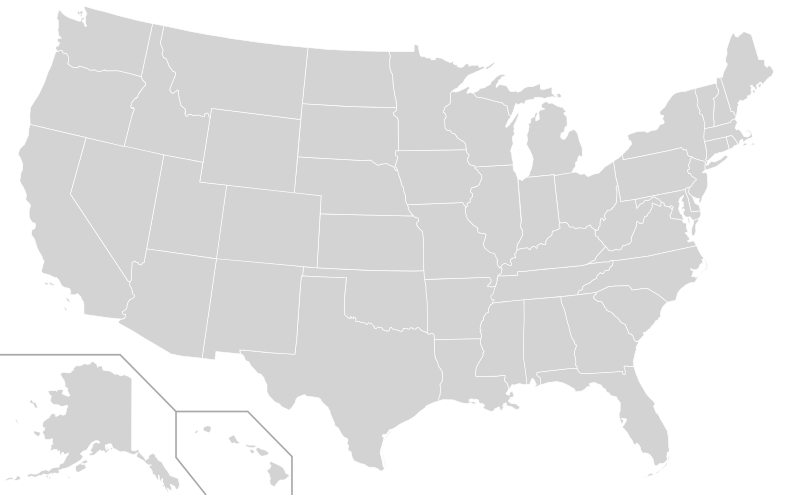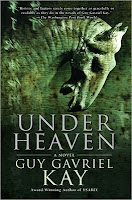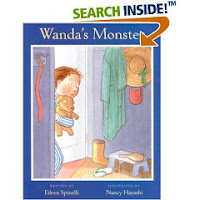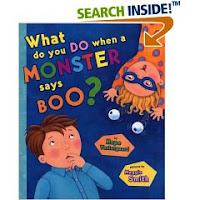new posts in all blogs
Viewing: Blog Posts Tagged with: reading list, Most Recent at Top [Help]
Results 26 - 50 of 76
How to use this Page
You are viewing the most recent posts tagged with the words: reading list in the JacketFlap blog reader. What is a tag? Think of a tag as a keyword or category label. Tags can both help you find posts on JacketFlap.com as well as provide an easy way for you to "remember" and classify posts for later recall. Try adding a tag yourself by clicking "Add a tag" below a post's header. Scroll down through the list of Recent Posts in the left column and click on a post title that sounds interesting. You can view all posts from a specific blog by clicking the Blog name in the right column, or you can click a 'More Posts from this Blog' link in any individual post.

By: Alice,
on 3/24/2014
Blog:
OUPblog
(
Login to Add to MyJacketFlap)
JacketFlap tags:
Current Affairs,
reading list,
self-determination,
*Featured,
secession,
international law,
statehood,
crimea,
public international law,
concepts of sovereignty,
Contested States,
international responsibility,
the laws of war,
klymenko,
wolfrum,
sergiy,
chufut,
qale,
Çufut,
Law,
Add a tag
With the situation in Crimea moving rapidly, our law editors recently put together a debate map on the potential use of force in international law. To further support the background reading that many students and scholars of international law need, we’ve compiled a brief reading list to better understand the context and application of international law, including concepts of sovereignty, international responsibility, the laws of war, self-determination, secession, and statehood.
Brownlie’s Principles of Public International Law, Eighth Edition by James Crawford
Check Part III: Territorial Sovereignty, Part VI: International Transactions, Part IX: The Law of Responsibility, and Part XI: Disputes for overviews of the major issues in the Crimea crisis. Identify the different elements of the public international system at play.
Documents on the Laws of War, Third Edition, edited by Adam Roberts and Richard Guelff
Review the core rules, protocols, and conventions governing rights, duties, protections, and applications in wartime. What guidance can they provide?
The Law of International Responsibility, edited by James Crawford, Alain Pellet, and Simon Olleson; assistant editor Dr Kate Parlett
With discussion in Europe and the United States about their obligations to Ukraine, it’s essential to understand what protections there are to offer – and what qualifications must be met before enforcement.
Contested Statehood: Kosovo’s Struggle for Independence by Marc Weller
What can we learn from the international attempts to settle the Kosovo crisis and apply these lessons to Crimea? What failures can be avoided?
The Foreign Policy of Counter Secession: Preventing the Recognition of Contested States by James Ker-Lindsay
Gain insight from interviews with leading experts on the territorial integrity of states versus the right to self-determination.
The War Report: 2012, edited by Stuart Casey-Maslen
Much of the actions that the international community may take are predicated on the definition of war — or at least aggressive action. If Crimea doesn’t undergo a seamless transition, will this conflict be included the the 2014 war report?
Robert Beck on Grenada and Georg Nolte on Intervention by Invitation from Wolfrum (Ed.) in The Max Planck Encyclopedia of Public International Law
Crimea has voted for annexation and invited Russia into the country. What lessons can be drawn from Grenada 1983?

A panoramic view from Çufut Qale (Chufut Kale) in Crimea, Ukraine. Photo by Sergiy Klymenko. CC BY SA 3.0 via Wikimedia Commons.
Louise Doswald Beck’s “The Legal Validity of Military Intervention by Invitation of the Government” in The British Year Book of International Law
While scholars debate the meanings of the basic theoretical principles of international law, how do they compare to historical interventions?
Two approaches to South Ossetia: Philip Leach from Wilmshurst (Ed.) The Classification of Conflicts and Angelika Nussberger from Wolfrum (Ed.) The Max Planck Encyclopedia of Public International Law
In 2008, tensions between Georgia and Russia spilled over into an armed conflict. Are there lessons for Russia’s conduct — as well as the international community’s — for today?
Georg Nolte and Albrecht Randelzhofer on Article 51 from Simma (Ed.) The Charter of the United Nations: A Commentary
There is no doubt the UN Charter will be invoked in the debates, so clear commentary is crucial to understanding it.
Both Stefan Oeter and Daniel Thurer on Self-Determination
If the people of Crimea choose to join Russia, who is the international community to stop them?
James Crawford on Secession from The Creation of States in International Law, Second Edition
What are the tests for international recognition now that Crimea has seceded?
Yves Beigbeder on Referendum from Wolfrum (Ed.) The Max Planck Encyclopedia of Public International Law
There have been a number of disputes over Crimea’s referendum — from lack of choice to intimidation at the polling stations.
Jens Ohlin on Aggression from Cassese (Ed.) The Oxford Companion to International Criminal Justice
Shots have been fired. If the conflict escalates, how and when does it qualify as aggression under international law?
Oxford University Press is a leading publisher in international law, including the Max Planck Encyclopedia of Public International Law, latest titles from thought leaders in the field, and a wide range of law journals and online products. We publish original works across key areas of study, from humanitarian to international economic to environmental law, developing outstanding resources to support students, scholars, and practitioners worldwide. For the latest news, commentary, and insights follow the International Law team on Twitter @OUPIntLaw.
Subscribe to the OUPblog via email or RSS.
Subscribe to only law articles on the OUPblog via email or RSS.
The post An international law reading list for the situation in Crimea appeared first on OUPblog.


By: Elyse Turr,
on 3/15/2014
Blog:
OUPblog
(
Login to Add to MyJacketFlap)
JacketFlap tags:
*Featured,
Books,
History,
Biography,
Africa,
women's history month,
World,
reading list,
Middle East,
America,
Asia,
British,
Latin America,
Europe,
Add a tag

This March we celebrate Women’s History Month, commemorating the lives, legacies, and contributions of women around the world. We’ve compiled a brief reading list that demonstrates the diversity of women’s lives and achievements.
Women in Asia

The Courtesan’s Arts: Cross-Cultural Perspectives, Edited by Martha Feldman and Bonnie Gordon
Delve into courtesan cultures, including artistic practices and cultural production, often overlooked or diminished in relevancy.
The Power of Gender and the Gender of Power: Explorations in Early Indian History by Kumkum Roy
Discover the distinct strategies through which men and women constituted their identities in India for all their implications, tensions, and inconsistencies.
Cornelia Sorabji: India’s Pioneer Woman Lawyer: A Biography by Suparna Gooptu
Learn about Sorabji’s decisive role in opening up the legal profession to women long before they were allowed to plead before the courts of law, including her writings and personal correspondence.
Women in the Middle East

Cleopatra: A Biography by Duane W. Roller
Uncover not the figure in popular culture, arts, and literature of the last five hundred years — but the real last Greek queen of Egypt.
Conceiving Citizens: Women and the Politics of Motherhood in Iran by Firoozeh Kashani-Sabet
Place women in their proper role as mothers of a nation — central to the history of Iran during successive regimes in the 19th and 20th centuries.
The Imperial Harem: Women and Sovereignty in the Ottoman Empire by Leslie P. Peirce
Examine the sources of royal women’s power and assess the reactions of contemporaries, which ranged from loyal devotion to armed opposition.
Women in British History

Singled Out: How Two Million British Women Survived Without Men After the First World War by Virginia Nicholson
Try to keep up with a generation of women fated to remain unmarried in the aftermath of the Great War.
The Wealth of Wives: Women, Law, and Economy in Late Medieval London by Barbara A. Hanawalt
Consider an overlooked contribution to London’s economy—the wealth that women accumulated through inheritance, dowry, and dower.
Queen Anne: Patroness of Arts by James A. Winn
Study the life and reign of Queen Anne through literature, art, and music from Dryden, Pope, Purcell, Handel, Lely, Kneller, Wren, Vanbrugh, Addison, Swift, and many other artists.
Women in European History

Murder of a Medici Princess by Caroline P. Murphy
Illuminate the brilliant life and tragic death of Isabella de Medici, one of the brightest stars in the dazzling world of Renaissance Italy, the daughter of Duke Cosimo I, ruler of Florence and Tuscany.
Writing the Revolution: A French Women’s History in Letters by Lindsay A. Parker
Investigate nearly 1,000 familiar letters, which convey the intellectual, emotional, and familial life of a revolutionary in all of its complexity.
The Burgher and the Whore: Prostitution in Early Modern Amsterdam by Lotte van de Pol
Delve into the cultural, social, and economic conditions of the lives of poor women in a seafaring society from the perspectives of prostitutes, their bawds, their clients, and the police.
Women in American History

Southern Lady, Yankee Spy: The True Story of Elizabeth Van Lew, a Union Agent in the Heart of the Confederacy by Elizabeth R. Varon
Probe the life and work of one of the most remarkable women of the Civil War era–the leader of the North’s key spy ring in the South.
Working Women, Literary Ladies: The Industrial Revolution and Female Aspiration by Sylvia J. Cook
Trace the hopes and tensions generated by expectations of gender and class from the first New England operatives in the early 19th century to immigrant sweatshop workers in the early 20th.
Seneca Falls and the Origins of the Women’s Rights Movement by Sally McMillen
Join the meeting that launched the women’s rights movement and changed American history.
I Died for Beauty: Dorothy Wrinch and the Cultures of Science by Marjorie Senechal
Enter the provocative, scintillating mind of the talented and flawed scientist.
African American Women Chemists by Jeannette Brown
Connect to the lives of African America women chemists, from the earliest pioneers through late 1960′s when the Civil Rights Acts were passed, to today.
Women in Latin American History

Power and Women’s Representation in Latin America by Leslie A. Schwindt-Bayer
Look at the recent trends in women’s representation in Latin America, and the complex and often incomplete nature of women’s political representation.
Refusing the Favor: The Spanish-Mexican Women of Santa Fe, 1820-1880 by Deena J. Gonzalez
Uncover the key role “invisible” Spanish-Mexican women played in the US takeover of Mexico’s northern territory and gain a greater understanding of conquest and colonization.
Weaving the Past: A History of Latin America’s Indigenous Women from the Prehispanic Period to the Present by Susan Kellogg
Reach back through women’s long history of labor, political activism, and contributions to — or even support of — family and community well-being.
Women’s history encompasses the history of humankind, including men, but approaches it from a woman‐centered perspective. It highlights women’s activities and ideas and asserts that their problems, issues, and accomplishments are just as central to the telling of the human story as are those of their brothers, husbands, and sons. It places the sociopolitical relations between the sexes, or gender, at the center of historical inquiry and questions female subordination.
Subscribe to the OUPblog via email or RSS.
Subscribe to only history articles on the OUPblog via email or RSS.
Image Credits: (1) Physical World Map via CIA World Factbook (public domain). (2) Map of Asia by Bytebear. CC-BY-3.0 via Wikimedia Commons. (3) Map of Middle East by NuclearVacuum. Public domain via Wikimedia Commons. (4) Map of Britain by Anonymous101. CC-BY-SA-3.0 via Wikimedia Commons. (5) Map of Europe via CIA World Factbook (public domain). (6) Blank US Map by Theshibboleth. CC-BY-SA-3.0 via Wikimedia Commons. (7) Map of Latin America and the Caribbean by Yug. CC-BY-SA-3.0 via Wikimedia Commons.
The post Celebrating Women’s History Month appeared first on OUPblog.


By: Kirsty,
on 9/9/2013
Blog:
OUPblog
(
Login to Add to MyJacketFlap)
JacketFlap tags:
Literature,
fairy tales,
folkore,
myth,
beowulf,
hans christian andersen,
reading list,
grimm,
OWC,
folk tales,
andersen,
Oxford World's Classics,
duckling,
Humanities,
mabinogion,
le morte darthur,
*Featured,
icelandic saga,
eirik the red,
Jessica Harris,
sir gawain and the green knight,
the nibenlungenlied,
Add a tag

By Jessica Harris
This month our Oxford World’s Classics reading list is on folk and fairy tales. Many of these stories pre-date the printing press, and most will no doubt continue to be told for hundreds of years to come. How many of these have you heard of, and have we missed out your favourite? Let us know in the comments.
Beowulf
No list on folklore would be complete without Beowulf: probably the most famous English folk tale and a great story. This half-historical, half-legendary epic poem written by an unknown poet between the 8th and 11th century tells the story of the majestic hero Beowulf, who saves Hrothgar, the Danish king, from monstrous and terrifying enemies before eventually being slain. Through this tale of swashbuckling adventure we also see the power struggles and brutality of medieval politics.
Selected Tales by Jacob and Wilhelm Grimm
In 1812 the Brothers Grimm took contemporary German folk tales and shaped them in their own bloodthirsty way, and in doing so captivated and horrified children for years to come. There are no morals here; no happy endings – the antagonists such as the evil stepmother won’t just steal your sweets but would kill you without a second thought. Here we have, for example, the original Snow White, with the Witch forced to dance in red-hot shoes until her death.
Le Morte Darthur by Thomas Malory
This text, written by Sir Thomas Malory in 1470, provides us with the definitive version of many of the King Arthur stories: the Knights of the Round Table, Sir Lancelot’s betrayal, and the Quest for the Holy Grail. Here we see the Round Table full of warring factions; we see Arthur the King discredited by Lancelot, who begins an affair with his wife, Guinevere, and we see Arthur’s supporters’ revenge that Arthur is powerless to prevent. The book shows how Arthur and his court lived and felt – and it’s no wonder the legend is such a fundamental part of British culture.
Sir Gawain and the Green Knight
When the mysterious Green Knight turns up at King Arthur’s court and challenges anyone to strike him with his axe and accept a return blow in a year and a day, Sir Gawain, the youngest Knight in Sir Arthur’s court, decides to prove his mettle by accepting the challenge. However, when he strikes the Green Knight and beheads him, the man laughs, picks up his head and tells Gawain he has a year and a day to live. Despite being written in the fourteenth century, this poem’s main theme – proving yourself – makes it instantly relatable and compelling.

Statue of Hans Christian Andersen reading The Ugly Duckling, in Central Park, New York City
by Hans Christian Andersen
This collection of fairy tales is a world away from Grimm’s violent and sinister collection – this Danish author was the creator of charming, accessible stories such as The Ugly Duckling and the Emperor’s New Clothes. Despite being poorly received when they were first published in 1936 because of their informality and focus on being amusing rather than educational, these stories have entertained generations of children. Christian Andersen invented the “fairy tale” as we know it today – simple, timeless stories that explore universal themes and end happily.
Eirik the Red and Other Icelandic Sagas
This saga was originally told orally around 1000 CE and was written down in the thirteenth or fourteenth century and is a major landmark in Icelandic folk literature. It tells the story of Eirik’s exile for murder, the same fate as his father, and his discovery and settlement in “Vinland”, a lush, plentiful country. It is believed to describe one of the first discoveries of North America, five hundred years before Captain Cook.
The Nibelungenlied
This epic comes from Medieval Germany and is a masterpiece of fantasy storytelling. Written in 1200 but rediscovered in the 1700s, it has since become the German national epic – on a par with the Iliad or the Ramayana. This story has it all: dragons, invisibility cloaks, fortune telling, and hoards of treasure guarded by dwarves and giants. We see love, jealousy and conflict, and the story ends with awful slaughter. The story has inspired a number of adaptations, including Wagner’s Ring cycle.
The Mabinogion
The Mabinogion is a collection of eleven medieval Welsh stories which combine Arthurian legend, Celtic myth and social narrative to create an epic series – its importance as a record of the history of culture and mythology in Wales is enormous. The stories are fantastical: the Four Branches of the Mabinogi are tales about British pagan gods recreated as human heroes, and sociological: The Dream of Macsen Wledig is an exaggerated story about the Roman Emperor Magnus Maximus.
Jessica Harris graduated from Warwick University with a degree in Politics, Philosophy, and Economics and has been working as an intern in the Online Product Marketing department in the Oxford office of Oxford University Press.
For over 100 years Oxford World’s Classics has made available the broadest spectrum of literature from around the globe. Each affordable volume reflects Oxford’s commitment to scholarship, providing the most accurate text plus a wealth of other valuable features, including expert introductions by leading authorities, voluminous notes to clarify the text, up-to-date bibliographies for further study, and much more. You can follow Oxford World’s Classics on Twitter, Facebook, or here on the OUPblog.
Subscribe to the OUPblog via email or RSS.
Subscribe to only literature articles on the OUPblog via email or RSS.
Subscribe to only Oxford World’s Classics articles on the OUPblog via email or RSS.
Image credit: Statue of Hans Christian Andersen reading The Ugly Duckling, in Central Park, New York City. By Dismas (Own work) [CC-BY-SA-3.0], via Wikimedia Commons
The post A folklore and fairy tales reading list from Oxford World’s Classics appeared first on OUPblog.

2013 Summer Reading List
Here are just some of our favorite titles for Summer Reading and available on the First Book Marketplace. Contributions are pulled from the fabulous lesson plans compiled by teachers on Share My Lesson.

Little House on the Prairie – Laura Ingalls Wilder
Laura Ingalls and her family leave their little house in the Big Woods of Wisconsin and set out for Kansas. They travel for many days in their covered wagon until they find the best spot to build their little house on the prairie. Sometimes pioneer life is hard, but Laura and her folks are always busy and happy in their new little house.

Are You There God? It’s Me, Margaret. – Judy Blume
It is the story of twelve-year-old Margaret Simon who is worried she’ll never have anything to put in her bra, won’t know how to kiss a boy when the time comes, and worst of all, will be the last in the PTS club to get her period. As if all that weren’t enough, she’s getting used to a new home and a new school. Her private talks with God are special to her, but is she supposed to be Jewish or Christian?

Sarah Plain and Tall – Patricia Maclachlan
Their mother died the day after Caleb was born. Their house on the prairie is quiet now, and Papa doesn’t sing anymore. Then Papa puts an ad in the paper, asking for a wife, and he receives a letter from one Sarah Elisabeth Wheaton, of Maine. Papa, Anna, and Caleb write back. Caleb asks if she sings. Sarah decides to come for a month. She writes Papa: I will come by train. I will wear a yellow bonnet. I am plain and tall, and tell them I sing.

Island of the Blue Dolphins – Scott O’Dell
“Winner of the Newbery Medal in 1961, this story of Karana, the Indian girl who lived alone for eighteen years on an island off the coast of California, still fascinates young readers. Her survival story–fighting the wild dogs and loneliness, hunting for food, and hoping to be rescued–is spellbinding.” — Children’s Literature

The Magician’s Elephant – Kate DiCamillo
When a fortuneteller’s tent appears in the market square of the city of Baltese, orphan Peter Augustus Duchene knows the questions that he needs to ask: Does his sister still live? And if so, how can he find her? The fortuneteller’s mysterious answer (an elephant! An elephant will lead him there!) sets off a chain of events so remarkable, so impossible, that you will hardly dare to believe it’s true.

Henry Aaron’s Dream – Matt Tavares
Before he was Hammerin’ Hank, Henry Aaron was a young boy growing up in Mobile, Alabama, with what seemed like a foolhardy dream: to be a big-league baseball player. He didn’t have a bat. He didn’t have a ball. And there wasn’t a single black ball player in the major leagues. But none of this could stop Henry Aaron.

The Wonderful Wizard of Oz – L. Frank Baum
In L. Frank Baum’s original tale, The Wonderful Wizard of Oz, readers will find themselves along a familiar yellow brick road and with their favorite beloved characters. After more than a hundred years since its first publication, The Wonderful Wizard of Oz continues to charm its readers on an adventure of self-discovery filled with excitement, Flying Monkeys, and Wicked Witches to the Emerald City.

The Indian in the Cupboard – Lynne Reid Banks
What could be better than a magic cupboard that turns small toys into living creatures? Omri’s big brother has no birthday present for him, so he gives Omri an old medicine cabinet he’s found. Although their mother supplies a key, the cabinet still doesn’t seem like much of a present. But when an exhausted Omri dumps a plastic toy Indian into the cabinet just before falling asleep, the magic begins.

Ramona Quimby, Age 8 – Beverly Cleary
All the Quimbys have their ups and downs, but none feels them more intensely than Ramona. Her low point is undoubtedly reached the day she throws up in class and Mrs. Whaley instructs the children to hold their noses and file into the hall. But three days later Ramona recovers her nerve sufficiently to give a book report in the style of a T.V. commercial, bringing down the house.

To Kill a Mockingbird – Harper Lee
Through the young eyes of Scout and Jem Finch, Harper Lee explores with rich humor and unswerving honesty the irrationality of adult attitudes toward race and class in the Deep South of the 1930s. The conscience of a town steeped in prejudice, violence, and hypocrisy is pricked by the stamina and quiet heroism of one man’s struggle for justice—but the weight of history will only tolerate so much.

Mary Poppins – Dr. P.L. Travers
An extraordinary English nanny blows in on the East Wind with her parrot-headed umbrella and magic carpetbag and introduces her charges, Jane and Michael, to some delightful people and experiences.
The post 11 Books Not to Be Missed On Your Summer Reading List (9-12yrs) appeared first on First Book Blog.

One of the things I want to improve on this year is to read more books. Having a stack of books is always a good problem to have wouldn’t you say? :)
Here are some recent and upcoming releases that I’ve added to my 2013 Winter To-Be-Read (TBR) list:
Uses for Boys by Erica Lorraine Scheidt
Paper Valentine by Brenna Yovanoff
The Dead and Buried by Kim Harrington
Scarlet by Marissa Meyer (2/5/2013)
Out of the Easy by Ruta Sepetys (2/15/2013)
Eleanor & Park by Rainbow Rowell (2/26/20103)
How about you? What books are you looking forward to reading during the cold months?

.jpg?picon=1806)
By:
Linda Strachan,
on 12/6/2012
Blog:
An Awfully Big Blog Adventure
(
Login to Add to MyJacketFlap)
JacketFlap tags:
Dreams,
reading list,
Linda Strachan,
Wolfie,
Wolfsbane,
The fool's Girl,
Baby Pie,
A Boy Called MOUSE,
Die For Me,
A Game of Thrones,
Under Heaven,
Fallen Grace,
Don't Judge Me,
Arthur's Tractor,
Add a tag
Different kinds of books for different kinds of mood. Are you like me, do you vary a lot in what you want to read? I find it often depends on the mood I am in. Sometimes it is fantasy, sometimes I am reading adult novels, Young Adult, Younger books or picture books, but in the end it is all about whether the book is a good read, and also in the case of books for younger readers, whether it works for the intended audience.
Here are a few of the books I have enjoyed this year- not actual reviews but there are plenty reviews of all of these, some in the ABBA review pages, I wanted to share some books I have enjoyed and I hope you might suggest some books that have been on your list this year, in the comments.
I particularly enjoy epic fantasy where there are several books in a series. I love it when I have been reading a series and I get the latest volume about a place or time or other world where I know the characters, care what happens to them. It is like slipping on a comfortable coat but in the hands of a skilled storyteller you know you will be entertained, and sometimes frightened or upset for the characters, perhaps fall in love with them and laugh or cry with them, experience their loss, their discomfort and decisions; exploring their values and their lives . It is all part of the experience.

I have read some of A Song of Ice and Fire series , but I am beginning to read it again starting once more with
A GAME OF THRONES so that I can get back into it before I read the two books in the series I have not read yet.
I love the way George RR Martin is not afraid to kill off characters you care for, so that you are never sure. So many books I read (particularly in a series)I know the main characters will always find a way out of any situation and that sense of reality and real life danger is lost.

I loved getting lost in the world created by Gillian Phillip in the Rebel Angels series. This is another engrossing fantasy series and Book3,
WOLFSBANE, came out this summer. Gillian is not afraid to give her characters a really bad time of it, but their difficulties and their loves and fight for survival, make them all the more real.

I am a huge fan of Guy Gavriel Kay and could not miss out
UNDER HEAVEN,
A stand alone fantasy. I think it is one of his best.
'The world could bring you poison in a jeweled cup, or surprising gifts. Sometimes you didn't know which of them it was...' You gave a man one of the famed Sardian horses to reward him greatly. You gave him four or five to exalt him above his fellows, propel him towards rank, and earn him jealousy, possibly mortal jealousy. Two hundred and fifty is an unthinkable gift, a gift to overwhelm an emperor.'Under Heaven...takes place in a world inspired by the glory and power of Tang Dynasty China in the 8th century, a world in which history and the fantastic meld into something both memorable and emotionally compelling.
I loved Mary Hooper's
FALLEN GRACE it is describled as..
'A stunning evocation of life in Victorian London, with vivid and accurate depictions, ranging from the deprivation that the truly poor suffered to the unthinking luxuries enjoyed by the rich: all bound up with a pacy and thrilling plot, as Grace races to unravel the fraud about to be perpetrated against her and her sister.'
and
THE FOOL'S GIRL by Celia Rees

'In an adventure that stretches from the shores of Illyria to the Forest of Arden, romance and danger go hand in hand.'
You can read an excellent account of how this book came about and see a video clip of her talking about the book on Celia's website
www.celiarees.com/fools_girl/index
and also Penny Dolan's
A Boy Called Mouse“‘Penny Dolan unfolds a story that will have her audience captivated from the intriguing cast list that precedes Chapter One to the bittersweet epilogue . . . This is a true page-turner - clearly influenced by the timeless storytelling of Charles Dickens and Charlotte Bronte, but still very much an original in its own right'” –
Primary TimesThree great historical novels.
I don't really do vampires but this year I did dip into a couple in that genre and I enjoyed them so here they are. They always seem to have such amazing covers, too!
I met Amy Plum this year at the Edinburgh Book Festival and
DIE FOR ME is the first of her series, the second is out now and the third in 2013. It is set in Paris which gives it a little extra style, and is very readable, with credible characters.
'Kate discovers that Vincent is s a revenant—an undead being whose fate forces him to sacrifice himself over and over again to save the lives of others. Vincent and those like him are bound in a centuries-old war against a group of evil revenants who exist only to murder and betray.'
'In the City of Lights, two star-crossed lovers battle a fate that is destined to tear them apart again and again for eternity.'
A new series Sarah Midnight starts with DREAMS. It is by Daniela Sacerdoti. You can read a review of it on the
Abba review ' Ever since her thirteenth birthday, seventeen-year-old Sarah Midnight's dreams have been plagued by demons - but unlike most people's nightmares, Sarah's come true.
Sheltered from the true horrors of the Midnight legacy She is cruelly thrust into a secret world of unimaginable danger after the murder of her parents, as she is forced to take up their mission. Alone and unprepared for the fight that lies before her, Sarah must learn how to use the powers'
If you are looking for something slightly younger Emma Barnes' wonderful new book
WOLFIE is a delightful tale for younger readers that is attracting a lot of well deserved praise.
'Sometimes a girl's best friend is...A WOLF.
Lucie has always longed for a dog.
But not one this big.
Or with such sharp teeth.
Or with such a hungry look in its eyes...
Lucie realises that her new pet is not a dog, but a wolf. Not only that, but a wolf with magical powers.'
For little ones a couple of great picture books I enjoyed...I love picture books where the pictures tell a quite different story to the one in the text. Both of these are a lot of fun.
'There always seems to be something wrong with his tractor. But Arthur is concentrating so hard on his tractor that he doesn't notice a very exciting magical story that is happening all around him!'
Three little trolls, Oink Moink and Boink, go out to find a baby for the baby pie they want to make...but they are in for a surprise!
Can you sniff it?
Can you whiff it?
Lick lips, pat belly, my oh my.
What books have your had on your reading list this year? 
www.lindastrachan.com
Linda Strachan is the award winning author of over 60 books for all ages from picture books to teenage/ YA novels and a writing handbook Writing For Children
Her latest novel is Don't Judge Me- published by Strident November 2012

By:
Annie Beth Ericsson,
on 9/7/2010
Blog:
Walking In Public
(
Login to Add to MyJacketFlap)
JacketFlap tags:
curtis sittenfeld,
prep,
catching fire,
stieg larsson,
augusten burroughs,
mockingjay,
now reading,
jonathan tropper,
running with scissors,
this is where I leave you,
girl with the dragon tattoo,
girl who played with fire,
book reviews,
summer,
grown-up books,
reading list,
hunger games,
Add a tag

As with exercise regimens and New Year’s resolutions, summer reading lists are those kind of goals that, despite the best of intentions, never seem to get finished. Still, I’m pretty jazzed about the amount of reading I’ve managed on the subway and at lunch, and I forgive myself for not getting to the rest of the list – I had two trilogies to attend to!
I realize that I never expressed my post-reading feelings about some of these titles, so here’s a round up of the books I promised I’d read, and actually did!
The Girl With The Dragon Tattoo AND The Girl Who Played With Fire – Stieg Larsson /
Murder mysteries aren’t exactly my thing, but I can see why this trilogy has so much buzz. If you can get through the first 250+ pages of exposition and keep up with the host of Swedish names, Larsson’s first book is a truly engrossing thriller, and the sequel takes it right on par from there.
I’m not sure why Dragon Tattoo, and especially detective/journalist/man-about-town Mikael Blomkvist, would be considered feminist in the least, as pointed out by The Rejectionist in this deliciously seething review. Blomkvist is exactly the man who male fiction writers like to fantasize they are (see Robert Langdon), and he spends way too much time being a lady-magnet in tweed to actually be a believable character. Salander, on the other hand, may be seriously screwy, but at least she is interesting.
I also agree that reading or watching highly disturbing scenes of rape and torture is not my idea of a good time (really, I only watch Law and Order SVU for Chris Meloni and Ice-T). I could stomach parts of the no-holds-barred Swedish film with the sound off, and reading those gruesome scenes left me needing some Glee songs and a cupcake.
That being said, take Stieg Larsson’s trilogy for what it is – crime fiction – not some icon of feminist literature. Maybe, like me, you don’t only read characters who hold to real-life moral standards (if that’s the case, knock yourself out with Left Behind, please). Get lost in Larsson’s cold, cold Scandinavian underworld… then come up for air and find something happy to do.
This Is Where I Leave You - Jonathan Tropper /
Several months after hearing Tropper speak and praising the cover design, I finally, finally read This Is Where I Leave You… and found a voice that I wasn’t exactly prepared for. Sure, the dark comedic elements were impeccably timed, as expected. But Tropper’s protagonist, Judd Foxman, also left me with a perspective on the middle-aged male
.jpeg?picon=2871)
By: Cathy Puett Miller,
on 6/12/2010
Blog:
Teachers Are Sparklighters for Literacy Everyday!
(
Login to Add to MyJacketFlap)
JacketFlap tags:
literacy,
motivation,
american library association,
reading list,
summer reading,
engagement,
donalyn miller,
best practices,
summer slump,
Add a tag
Calling All Teachers: I Need To Hear Your VoiceSince the school year finished, I've been hearing lots of complaints from families about assigned reading taking all the fun out of summer experiences with books. There are two camps:
1) the parents who kids love to read and will read all summer but feel "constrained" by a book list, required reports to "prove" their reading or assignments during the vacation months. These moms and dads are telling me that making reading an "assignment" creates an environment where children see it as a chore rather than an adventure.
2) families who don't have a personal connection to the importance of reading for recreation during the summer to protect the reading gains a child has experienced during the school year. For these families, reading is also a labor, not a pleasure, an assigned task that someone always seems to slip through the cracks with other time demands and distractions.
What Do Researchers and Experts Say?There are several studies relating to this topic but one I find helpful in addressing our first group is from the
American Library Association. Their findings took into consideration both teacher and student perspective. This study also provides insight into the use of technology.
Did you know that there is a
research brief on a website called
Summerlearning.org? These ideas began at John Hopkins and you'll find plenty here to raise your level of understanding. And June 21 of this year, they are sponsoring a Summer Learning Day. You can visit their
website and share your ideas or read to the end of this blog where you'll find a free, grassroots way to touch a child.
Reading is Fundamental, so often in touch with the communities that surround our at-risk populations also comes through with an interesting article entitled
A Primer on Summer Learning Loss. What I appreciated in this article are not only the statistics about summer reading loss which we all know too well but the solutions framed from real schools and school districts. Duplicating best practices for those who have gone before us AND been successful is one of the best resources we have.
Kids are making
a splash with reading in Kansas this summer. I think any student would find at least one activity at their local library that they would enjoy.
Even Michelle Obama is speaking up on this issue. Regardless of her husband's politics, she's taking her stand against obesity and pairing it with the idea that summertime is reading time. Learn more about her support of
United We Serve's Let's Read, Let's Move initiative.
Here's a novel idea: take the ideas from this research and make them a part of a short "mini-study" for yourself, a personal investment in your own professional development this summer. It will put you in a posi

By: Rebecca,
on 5/26/2010
Blog:
OUPblog
(
Login to Add to MyJacketFlap)
JacketFlap tags:
percy,
immortals,
poseidon,
bibliography,
olympians,
OBO,
Reference,
Education,
Technology,
mythology,
A-Featured,
reading list,
A-Editor's Picks,
Online Resources,
Greek,
perseus,
Add a tag
Oxford Bibliographies Online is a series of intuitive and easy-to-use “ultimate reading lists” designed to help users navigate the vast seas of information that exist today. To introduce you to the doors this new online tool opens Andrew Herrmann, Associate Editor of OBO, has excerpted some suggested reading related to Greek mythology. Use his study guide below to impress the date you bring to see the Immortals.
Andrew Herrmann, Associate Editor, Oxford Bibliographies Online
300, Troy, Percy Jackson & the Olympians, the reboot of Clash of the Titans, the forthcoming Immortals…Hollywood has been brushing up on its epic hexameter (or more likely picked up a Spark Notes guide to Homer) and has re-imagined the swords-and-sandals genre for the 21st century. While it is fun to see these classic works morph from the original Greek texts into flashy, raging battles between Brad Pitt and Eric Bana, classicists and mythology buffs alike often shudder at the blatant inaccuracies presented in these films (if Hector had killed Agamemnon in Troy, we wouldn’t have the Oresteia!). For those interested in knowing what happens in the true classic tradition, OBO recommends the following works on some of the central figures of these films.
Zeus, leader of the Olympians, has a rich mythology which extends beyond Liam Neeson’s now famous “Release the Kraken!” line in Clash of the Titans. Pura Nieto Hernandez’s Mythology entry offers a good starting point for those interested in this lightning-wielding god:
Dowden, Ken. 2006. Zeus. Gods and Heroes of the Ancient World. London and New York: Routledge.
In spite of its brevity, this introduction accomplishes a lot. Not only does Dowden concentrate on the cult of Zeus, he also provides the reader with ample mythological information about his rich subject. His careful presentation and analysis of the previous large bibliography makes this book a good introduction even to the study of ancient religion. Good illustrations add to its appeal.
Poseidon, father of Percy Jackson in the recent Percy Jackson & the Olympians: The Lightning Thief and soon to be played by Kellan Lutz in the upcoming film Immortals, is the stormy god of the sea. The Greek Religion entry by Angelos Chaniotis points users to a detailed study on the worship of Poseidon in ancient Greece. However, this one is not in English, so brush off your dictionary or head over to Oxford Language Dictionaries Online:
Mylonopoulos, Joannis. 2003. Pelopónnesos oiketérion Poseidonos = Heiligtümer und Kulte des Poseidon auf der Peloponnes. Liège, Belgium: Université de Liège.
Thorough discussion of the cult, sanctuaries, festivals, and political significance of Poseidon in the Peloponnese; an exemplary study in terms of method, approach, and combination of diverse source material for the interpretation of the cult and sign
 The May Y’ALL book was Leviathan by Scott Westerfeld. A question that arose during discussion was what is “steampunk”? Below is a starting point to sources more qualified to answer and recommend titles for further reading.
The May Y’ALL book was Leviathan by Scott Westerfeld. A question that arose during discussion was what is “steampunk”? Below is a starting point to sources more qualified to answer and recommend titles for further reading.
We also brought our lists for best YA books of all time that we submitted to Persnickety Snark. Here’s my list:
10. Harry Potter and the Deathly Hallows by J.K. Rowling (although now I think it should have put Order of the Phoenix).
9. The Skin I’m In by Sharon Flake
8. Sleeping Freshman Never Lie by David Lubar
7. Hitchhiker’s Guide to the Galaxy by Douglas Adams
6. Ender’s Game by Orson Scott Card
5. Speak by Laurie Halse Anderson
4. Are You There God? It’s Me, Margaret by Judy Blume
3. To Kill a Mockingbird by Harper Lee
2. A Tree Grows in Brooklyn by Betty Smith
1. Outsiders by S.E. Hinton
June book is Liar by Justine Larbalestier






My name is Karen. And I’m a bookaholic.
I’ve been this way all my life. I blame my mother who took me to the library as a kid. We would literally stay until it closed. One of the highlights of my life was turning 13 and getting the “big girl” library card, which meant I could check out any book I wanted without restrictions.
I think I’m reading at least 10 books right now. Not counting the six craft books that I checked out from the library last weekend. On average, I read about maybe 40-60 books a year. I’ve been keeping a “book inventory” spreadsheet since 2002 and as of now I have about 350 books listed.
And that’s just the fiction books.
Right now, all of my free time is spent on the Summer Challenge, but I usually try to read a few pages before I go to bed. I chose the book depending on how I’m feeling. Right now, I have 2 fiction books, 1 craft book, 1 history and the rest are non-fiction.
What can I say? I LOVE books!
So anyway, I’m really psyched about all of the good fiction coming out and/or has recently been released. So I have a growing “To Be Read” list.
Here’s what on my list (so far):
 The Waters and the Wild by Francesca Lia Block. This story centers around Bee, a 13-year-old who has begun seeing her own doppelgänger. Just that premise itself is intriguing to me and you know that her “twin” will want something from her and it probably won’t be good.
The Waters and the Wild by Francesca Lia Block. This story centers around Bee, a 13-year-old who has begun seeing her own doppelgänger. Just that premise itself is intriguing to me and you know that her “twin” will want something from her and it probably won’t be good.
 When You Reach Me by Rebecca Stead. This story centers around Miranda who starts to get mysterious notes from someone who knows all about her—even things that haven’t happened yet. Plus, references a Wrinkle in Time? Yep another premise that gets me—who is writing these notes? How do they know all this stuff? Very intriguing. This novel is also set in the 70’s and has gotten many starred reviews.
When You Reach Me by Rebecca Stead. This story centers around Miranda who starts to get mysterious notes from someone who knows all about her—even things that haven’t happened yet. Plus, references a Wrinkle in Time? Yep another premise that gets me—who is writing these notes? How do they know all this stuff? Very intriguing. This novel is also set in the 70’s and has gotten many starred reviews.
 Because I am Furniture by Thalia Chaltas. I want to read more novels in verse and I saw this in the bookstore and was taken away. The story centers around Anke and her abusive father. What interested me about this book is the journey Anke takes to find her voice.
Because I am Furniture by Thalia Chaltas. I want to read more novels in verse and I saw this in the bookstore and was taken away. The story centers around Anke and her abusive father. What interested me about this book is the journey Anke takes to find her voice.
 Liar by Justine Larbalestier. I read an excerpt off the author’s website. The story centers around Micah, who’s a compulsive liar. When a friend dies mysteriously, the questions start. Was she dating him? Did she kill him? It got me interested. Micah describes herself as bi-racial but some people are saying that the cover art doesn’t match. Hopefully this isn’t another bad cover not depicting the character right. I’ll have to read the book first. Micah is a liar, after all.
Liar by Justine Larbalestier. I read an excerpt off the author’s website. The story centers around Micah, who’s a compulsive liar. When a friend dies mysteriously, the questions start. Was she dating him? Did she kill him? It got me interested. Micah describes herself as bi-racial but some people are saying that the cover art doesn’t match. Hopefully this isn’t another bad cover not depicting the character right. I’ll have to read the book first. Micah is a liar, after all.
And of course, for those who know me, they already know that I’m waiting anxiously for the second installments of two trilogies.
 Sacred Scars by Kathleen Duey
Sacred Scars by Kathleen Duey
 Catching Fire by Suzanne Collins
Catching Fire by Suzanne Collins
I’m excited about my TBR List. I’m sure that I’ll add more to the list!
Other Posts You Might Like:
- Best Book Ever…It’s Relative

Emily age 11 Orchard Hill School
Favorite Books:
1.Diary of a wimpy kid "The Last Straw"
2.Eleven
3.Chicken Soup for the Girls Soul
4.Diary of a Wimpy Kid "Rodrick Rules
5.Dairy of a Wimpy Kid
Genevieve, age 9, Kernsville Elementary
Favorite Books:
Black Beauty
Diary of a Worm
Diary of a Wimpy Kid
Travels with my Family
Gallop to the Sea
Which would you Rather Be?
Amy, age 8, Orchard Hill School
The Misadventures of Rooter & Snuffle
Flat Stanley
Princess Treasury, a collection of Princess stories
Junie B. Jones
Angelina at the Fair

I think it's fitting that I finished reading "Dr. Zhivago" between Valentine's Day and The Oscars.
I had my "Dr. Zhivago" winter wedding in a Chicago snowstorm 23 Valentine's Days ago. The winter scene in the movie of the the house in Varykino, an ice palace the only refuge for two lovers, was partly responsible. I have felt drawn to the story on many levels and am so happy that I have finally read this book. A miracle, since I am such a slow reader and the book itself is 500+ pages.
What was it about the narrative that was so compelling for me?
My personal experiences/history shape my interpretations and tastes. I am fascinated by love stories. I am fascinated by stories about the ravages of war and the way it fractures lives but also how people survive and learn to endure. I am fascinated about how war-torn lives leave footprints in their families for future generations. This story gave me great insight into these issues.
From a writer's perspective, what have I learned?
I enjoyed reading this book written by a writer and a poet. His lyrical style so suited his subject matter. The narrative was written in third person omniscient which was common at the time. The story published in Italy in 1957 and the POV was appropriate to allow the telling of such an epic tale. I tend to think that someone who had experienced the Russian Revolution would find it too personal to have less narrative distance. But yet, as I've read so many times in advice to writers, the writing never got in my way. I easily journeyed from one story to another within the scope of the turmoil in Russia because the narrative was consistently poetic. Pasternak, a poet and writer, wrapped himself into Dr. Zhivago, himself a doctor poet.
In fact, there was a section in the story about revision:
"The reason for his [Dr. Yuri Zhivago's] revision and rewriting was his search for strength and exactness of expression, but they also followed the promptings of an inward reticence that forbade him to disclose his personal experiences and the real events in his past with too much freedom, lest he offend or wound those who had directly taken part in them. As a result, his feeling, still pulsing and warm, was gradually eliminated from his poems, and romantic morbidity yielded to a broad and serene vision that lifted the particular to the level of the universal and familiar. He was not deliberately striving for such a goal, but this broad vision came of is own accord as a consolation, like a message sent to him by Lara from her travels, like a distant greeting from her, like her appearance in a dream or the touch of her hand on his forehead, and he loved this ennobling imprint."
What surprised me?
That Pasternak was awarded The Nobel Prize for Literature in 1958 for "for his important achievement both in contemporary lyrical poetry and in the field of the great Russian epic tradition," but declined the honor because his award provoked criticism in Russia, as the government did not agree with his depiction of the October Revolution. In fact, he wasn't able to publish in Russia and made his living translating the works of Shakespeare and Gothe, etc.
Favorite quote:
"And remember: you must never, under any circumstances, despair. To hope and to act, these are our duties in misfortune. To do nothing and to despair is to neglect our duty."
What is amazing is that what I read is a translation. I wish that I knew Russian so that I could know the richness of the poetry in the original mms.
So, what does this have to do with screenplays?
It's the same every time I see a movie when I've read the book. The book is so much better. But, I do think that screenplays have a lot to teach an aspiring writer, like myself. The screenplay of Dr. Zhivago, although very different that the whole story of the book, focused on the love story between Zhivago and Lara. Every scene contributed to furthering that story. Comparing the novel to the screenplay taught me about how I see a story in my head [the novel] and have to get it down on paper [the screenplay]. I need to find the storyline that is most important and make ever scene count to get it done in a way that heightens the conflict and the pacing. So I feel that every idea I try to put to paper is this novel in my head and I need to get to the heart of it as if I were trying to write a screenplay. Like Elmore Leonard says, cut out all the boring parts. Not that I was really bored in the rich details of this book. I wasn't. I drank it all in and became that much more inspired. It worked because it was a story about a writer and a poet written by a writer and a poet.
My posts this week will have something to do about writing and what's inspired me in the movies that I take away as part of my writing process.
A BIG Happy Bday to my bro!

The discussion of Princess Bride was very good. I think everyone agreed the male relationships; friendship, and father/son were very well written. Male-female relationships not so much. And, Buttercup is basically a tool. A plot tool, that is. The movie went with the book very well, although we could have used more fight scenes.
In light of our great discussion, we planned the next books until November. And, they are:
July - My Most Excellent Year by Steve Kluger
August - TH1RTEEN R3ASONS WHY (audio version) by Jay Asher (request now on interlibrary loan)
September - Little Brother by Cory Doctorow
October - Teen Read Month in Oklahoma! Read any vampire book you want. Books with Bite, Bay-beeee! [Teen Read Week 2008 | Books with Bite @ your library].
November - Wednesday Wars by Gary Schmidt Book Review by the New York Times








1. This week my daughter got her first job out of college! Wooo-hooo! She’s excited and so are we. And…she decided to stay in San Francisco. Feels like home.
2. Hearing my dad say that he’s got seven more years after his pacemaker surgery this week.
3. I love, love, love the library. But you knew that. I hadn’t been in quite some time. Travels kinda got in the way. And, I mostly go when I’m writing, editing a mms. So I’m happy to say I’m on to my next novel. One I’ve written years ago but will be finishing, revising over the next few seasons. I like Stephen King’s idea of looking at writing books with the seasons. My last novel got me through Winter and Spring. This novel will be my Summer and Fall project. I love that Stephen King has a raven perched on the long vertical in the “h” on his logo on his website.
4. I love, love, love AAA. It’s amazing. I walk in yesterday, ask for help planning our road trip to Mt. Rushmore and get a great route and lots and lots of helpful maps and books---all because we are members. Love it. Among my treasures are…A map of the United States with our route mapped out in an orange highlighter [with cute arrows to let me know which way we are headed], maps of all the states involved PLUS a special “California’s Mother Lode Guide Map,” and “Yellowstone Grand Teton National Parks” map. And the AAA Tour books for all the states on our trip [and a few that aren’t but we may stray into]. So cool! If you are ever in the need to go anywhere, stop by AAA.
5. I love when Oso gets dusted with mustard on our morning runs. The yellow dust sprinkles beautifully over his black shinny fur. We met two new friends this morning: Blarney, a poodle [he got him on St. Patrick's Day, and Daisy a large hound, I think she was a Mastiff. And ran into our old pals, Yoggie and Rudy.
 Wanda's Monster
Wanda's Monster by Eileen Spinelli (Author), Nancy Hayashi (Illustrator); Albert Whitman & Company, March, 2005
by Eileen Spinelli (Author), Nancy Hayashi (Illustrator); Albert Whitman & Company, March, 2005
Ages 4-8
So many children have thought that a monster lives in their closet. Wanda is one of those kids. Everyone tries to calm her fears and make her realize that there are no monsters in the closet. Parents will relate to the methods used to make the closet monster-free! Grandma, unlike the others, thinks that there could be a monster. She explains to her granddaughter how the monster must be uncomfortable, and that monsters don't get any respect. Wanda tries to make the monster's closet experience a bit more comfortable by throwing a pillow into the closet and reading him a story before bed. Wanda starts to make friends with the monster, and is saddened when it's time for the monster to leave. However, Wanda recommends a place for the monster to go, and ends up comforting her cousin in the same manner that her grandmother comforted her.
Visit Eileen Spinelli's website.
 What do you do When a Monster says Boo?
What do you do When a Monster says Boo? by Hope Vestergaard (Author), Maggie Smith (Illustrator); Dutton Juvenile, Aug. 2006
by Hope Vestergaard (Author), Maggie Smith (Illustrator); Dutton Juvenile, Aug. 2006
Ages 4-8
This rhyming story will help you deal with a pesky monster.
"What do you do when a monster throws fits?
Hide in a closet and peek through the door?
No, no, no! The best thing to do is open a book and read 'til it sits."
The brightly colored illustrations reveal that the monster is really the little boy's sister. I'm certain an older brother or sister has looked at their sibling as a monster at one time or another. The repetitive phrases (No, no, no), the rhyme, and the illustrations make this a fun read.
Visit Hope Vestergaard's website. She has a great writer's resource page with wonderful articles. She offers a template for picture book dummies and, coming soon, she'll have printable writing workshop exercises.
 Ten Flashing Fireflies
Ten Flashing Fireflies by Philemon Sturges (author), Anna Vojtech (illustrator); North-South Books, 1995
by Philemon Sturges (author), Anna Vojtech (illustrator); North-South Books, 1995
Ages 3-6
Every child is amazed at fireflies and capturing them in a jar, so what better way to teach counting? A brother and sister add ten fireflies to their jar, but when the fireflies' light begins to fade in their bedroom, they free the fireflies counting down from ten. The nighttime illustrations come to life with the glowing specks of fireflies and will bring back memories of those summer nights catching these marvelous creatures.
"What do we see in the summer night? Ten flashing fireflies burning bright! Catch the one twinkling there like a star. One flashing firefly in our jar."

Pigeon Wants..., The
OF COURSE!
Read a Press Release on The Pigeon unveiling and a Q & A with Mo Willems from the Houston Chronicle.
 Dolley Madison Saves George Washington hardcover
Dolley Madison Saves George Washington hardcover by Don Brown.
by Don Brown.
Ages 4-8
Dolley Madison made a name for herself by being the premier hostess in Washington, DC while her husband, James Madison, was secretary of state under Thomas Jefferson. Thomas Jefferson was a widower, so Dolley Madison made quite the name for herself. As first lady during her husband's presidency, Dolley Madison played a major role in the capital's social and political scenes. However, it was during the War of 1812 that she secured her place as a legendary figure in American History. Despite the fact that the 100 soldiers assigned to protect the mansion ran off, she bravely remained behind to make sure that the painting of George Washington, as well as important government documents were saved from British forces. It's nice to see a picture book biography of a First Lady!
Visit the White House Historical Association for interesting information on Dolley Madison.
 Hop on over to Anastasia Suen's picture book of the day blog for the nonfiction Monday round-up.
Hop on over to Anastasia Suen's picture book of the day blog for the nonfiction Monday round-up.
 Little 1
Little 1 by Ann Rand (Author), Paul Rand (Illustrator); Chronicle Books 2006
by Ann Rand (Author), Paul Rand (Illustrator); Chronicle Books 2006
Ages 4-8
"Little 1 looked like a stick..."
Originally published in 1961, this picture book was illustrated and designed by Paul Rand, one of the most influential graphic designers of the twentieth century. The text by Ann Rand is filled with clever wordplay and not only tells the engaging story of Little 1 and his quest for a friend, but makes learning numbers and simple addition fun.
About the Author:
Ann Rand wrote five children's books, four of which were illustrated by her husband. In addition to the four children's books he illustrated, Paul Rand wrote and co-wrote several others, and designed some of the best-known corporate icons of his time, including the logos for ABC, IBM, and UPS.
Read the book in it's entirety at Lookybook.
Also by Ann Rand. . .
Sparkle and Spin: A Book About Words
View Next 25 Posts






























































Oh, I’m dying to read OUT OF THE EASY, too. Other than that, I haven’t really had a chance to sit down and figure out which books are being released soon. I should get on that!
I read an ARC of THE DEAD AND BURIED and really enjoyed it. And I cannot wait to read SCARLET!
Yep, I’m also looking forward to Out of the Easy! I haven’t been able to make myself read Between Shades of Gray (sounds so dark!), but Easy sounds too intriguing to miss.
There are some good books coming out. It’s crazy because I keep adding to my already leaning stack.
Oh, that’s good to know about THE DEAD AND BURIED. I liked the author’s CLARITY series too. I’m excited that SCARLET comes out in 2 weeks — I’m re-reading CINDER for plot analysis now.
I haven’t been able to crack open SHADES OF GRAY to read. I know that I’ll have to get my mind right for that one. But her new book sounds intriguing and I love stories set in New Orleans.